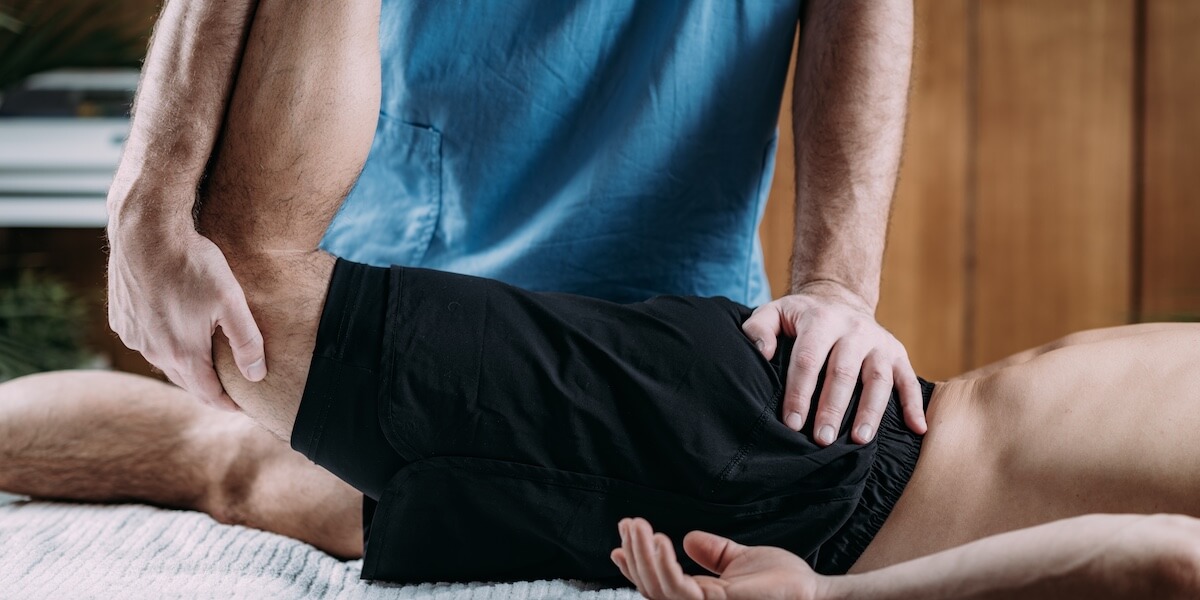Sports Massage is a specialised form of massage therapy designed to benefit individuals engaged in regular physical activity. It involves the manipulation of soft tissues, including muscles, tendons, ligaments, and fascia, to address problems and imbalances caused by repetitive and strenuous physical activity or trauma.
Principles of Sports Massage
- Holistic approach: Considering the entire body as a functional unit.
- Individualised treatment: Tailoring techniques to the specific needs of each person.
- Proactive and preventative: Preparing the body for future activity while addressing current issues.
- Evidence-based practice: Utilising scientifically proven techniques and methods.
- Functional focus: Emphasising techniques that improve performance and daily activities.
Benefits of Sports Massage
Short-term Benefits
- Pain relief: Reduces acute pain and discomfort in muscles and soft tissues.
- Improved flexibility: Enhances range of motion and muscle flexibility.
- Increased circulation: Boosts blood flow to affected areas, promoting healing.
- Reduced muscle tension: Alleviates tightness and knots in muscles.
- Stress reduction: Promotes relaxation and reduces physical tension.
Long-term Benefits
- Injury prevention: Reduces the risk of future injuries through improved muscle condition.
- Enhanced recovery: Promotes faster healing and recovery after intense activity.
- Improved performance: Optimises athletic performance through better muscle function.
- Reduced muscle soreness: Alleviates delayed onset muscle soreness (DOMS).
- Better posture: Corrects postural imbalances and alignment issues.
- Chronic pain management: Helps manage long-standing painful conditions.
Conditions Sports Massage Can Treat
Sports Massage can effectively address various conditions, including:
- Muscle strains and sprains
- Repetitive strain injuries
- Tennis elbow
- Lower back pain
- Joint inflammation
- Sports-related injuries
- Chronic muscle tension
- Postural issues
- Reduced range of motion
- Pre- and post-event muscle preparation and recovery
What to Expect from Treatment
When receiving a Sports Massage, you can anticipate:
- Initial assessment: The therapist will evaluate your medical history, physical condition, and specific concerns.
- Targeted techniques: Various massage techniques will be applied, including kneading, wringing, and deep tissue manipulation.
- Focus on problem areas: The therapist will concentrate on specific muscle groups or areas of concern.
- Varying pressure: The intensity of the massage may range from gentle to firm, depending on your needs and tolerance.
- Communication: Your therapist will encourage feedback to ensure your comfort and address your specific needs.
- Post-massage guidance: You may receive advice on stretching, exercise, or self-care techniques to maintain the benefits of the massage.
- Multiple sessions: Depending on your goals, a series of treatments may be recommended for optimal results.
Sports Massage offers a comprehensive approach to addressing sports-related injuries, enhancing performance, and promoting overall physical well-being. By combining targeted techniques with a focus on individual needs, it provides both immediate relief and long-term benefits for athletes and active individuals alike.
Citations:
- [1] https://www.sportstherapyuk.com/about-sports-massage/what-is-sports-massage
- [2] https://fayepattison.com/blog/3-long-term-benefits-of-sports-massage/
- [3] https://exeterwellness.co.uk/what-conditions-could-a-sports-massage-help-with/
- [4] https://neuromuscular.ie/service/sports-massage/
- [5] https://truebalancepainrelief.com/sports-massage/unlocking-the-benefits-of-sports-massage-for-different-populations/
- [6] https://breeze.academy/blog/what-can-sports-massage-therapists-treat/
- [7] https://www.origym.co.uk/blog/what-is-sports-massage/
- [8] https://www.runnersworld.com/uk/health/a44034342/sports-massage/

